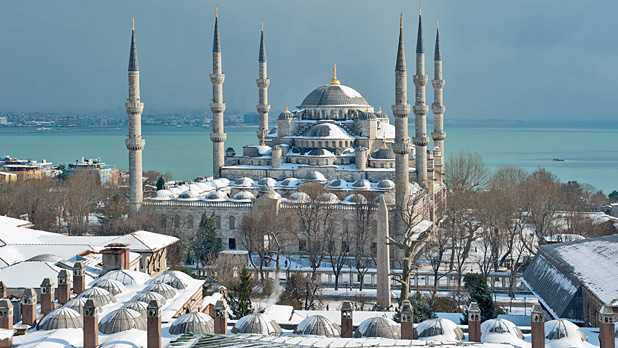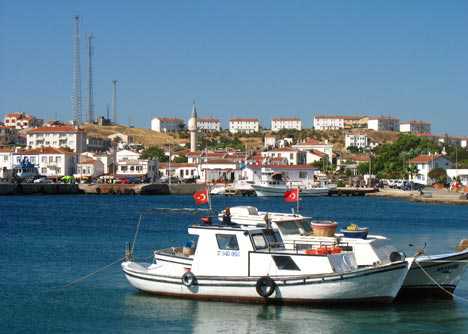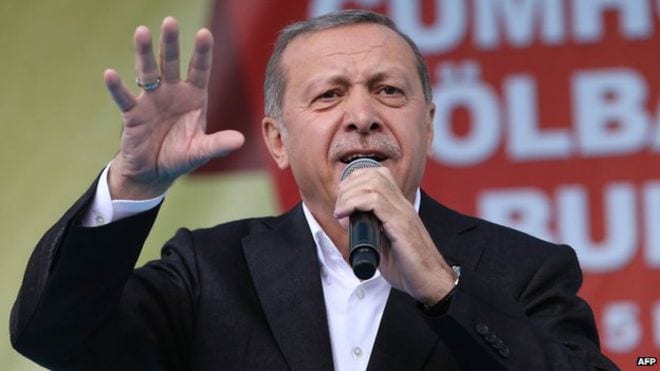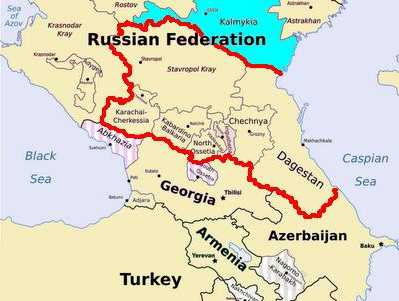Last month’s confrontation between Russia and Georgia over South Ossetia had a maritime dimension that continues to expand. Russia deployed elements of its Black Sea fleet to Georgia’s coast during its military operations and subsequently sank several Georgian naval vessels in Poti. During the clash Russia dispatched 10 vessels from Sevastopol to the Georgian coast.
Following the conflict, the United States determined to send humanitarian relief to Georgia but found its efforts constrained by the 1936 Montreux Convention. Now Moscow, clearly irritated by Washington’s intrusion into what it regards as its southern maritime frontier, has announced that it is deploying significant naval forces next month to the Caribbean for joint naval exercises with Venezuela. Kremlin spokesman Andrei Nesterenko told reporters, “Before the end of the year, as part of a long-distance expedition, we plan a visit to Venezuela by a Russian navy flotilla” (Izvestia, September 8).
The Caribbean deployment is not insignificant, as it includes the guided missile cruiser Peter Velikii, the largest surface vessel constructed by the Russian Federation since the collapse of the USSR, along with the anti-submarine ship Admiral Chabanenko (El Universal, September 8). Venezuelan Rear Admiral Salbatore Cammarata Bastidas said, “This is of great importance because it is the first time it is being done [in the Americas].” For Caracas, next month’s deployment is a timely riposte to the American administration’s announcement earlier this year that it was reactivating its Fourth Fleet, last deployed in southern hemisphere waters during World War Two.
In the aftermath of the South Ossetian confrontation, when the U.S. decided to dispatch humanitarian aid by sea to Georgia, it found its initial efforts constrained by the 1936 Montreux Convention, whose 29 articles limit the number of foreign warships that non-Black Sea powers can send through the Turkish Straits to no more than nine vessels with a total of 45,000 aggregate tons. Moreover, they could remain there for no longer than three weeks. The United States had initially considered dispatching the hospital ships USNS Comfort and the USNS Mercy, both converted oil tankers, but as each displaced 69,360 tons, they fell outside the Montreux convention limits. While Washington chafed under the restrictions, there was little it could do.
Last month NATO dispatched four ships from its Standing NATO Maritime Group 1 to the Black Sea for an exercise scheduled last October. The flotilla included Spain’s SPS Almirante Don Juan de Borbon, Germany’s FGS Luebeck, Poland’s ORP General Kazimierz Pulaski, and the USS Taylor. On August 22 the USS McFaul guided-missile destroyer loaded with humanitarian aid passed the Bosporus headed for Georgia with supplies such as blankets, hygiene kits and baby food, to be followed two days later by the USCGC Dallas cutter passing the Dardanelles. The USS Mount Whitney was also dispatched into the Black Sea with humanitarian aid, which it offloaded in Poti (Stars and Stripes, September 2).
Before the Montreux Convention was negotiated, both Turkey and Russia had suffered from foreign naval intervention through the Turkish Straits during and after World War One. The Gallipoli campaign was preceded by a joint Anglo-French maritime effort in March 1915 to force the Dardanelles, and the Royal Navy subsequently occupied Constantinople after the war and dispatched vessels into the Black Sea to assist anti-Bolshevik forces.
The Montreux Convention was intended to replace the 1923 Treaty of Lausanne, which had demilitarized the Bosporus and Dardanelles. Given their recent experience, both the Soviet Union and the Turkish Republic were interested in limiting foreign warships in the Black Sea; and for Ankara, the Montreux Convention was the first international agreement that fully acknowledged its sovereignty and position as successor to the “sick man of Europe,” the Ottoman Empire. Britain, Bulgaria, France, Greece, Japan, Turkey, the Soviet Union, and Yugoslavia ratified the Montreux Convention, which formally recognized Turkish sovereignty over the Turkish Straits. Given that Britain at the time was the predominant naval power in the Mediterranean, the United States was so uninterested in the diplomatic conference that produced the convention that it did not even send an observer to the negotiations.
The Russian media is now reporting that Washington is negotiating with Georgia and Turkey to establish a naval base at one of Georgia’s Black sea ports in Batumi or Poti, but Ankara is reportedly carefully assessing its position in order to avoid further political tension with Moscow (Gruziya Online, September 7). In a replay of a dispute earlier this year, Russia has temporarily blocked the shipment of Turkish produce into Russia, citing sanitary concerns; and the dispute, which has cost Turkey an estimated $500 million in lost trade, has triggered speculation in the Turkish media that Russia is trying to punish Turkey for allowing U.S. warships to transit the Bosporus (Hurriyet, September 8).
For those with a sense of history, a factor behind the 1962 Cuban missile crisis was Washington’s deployment of Atlas IRBMs in Italy and Turkey, which, in the wake of the confrontation, Washington quietly agreed to remove, as the development of ballistic missile submarines, the final component of Washington’s nuclear triad, obviated the need for forward basing of nuclear missiles off Russia’s southern shore. Forty years later, Turkey, sea power, and the Caribbean as subplots in rising U.S.-Russian tensions seem as interconnected as ever.






